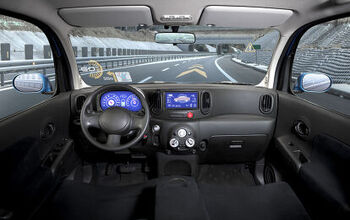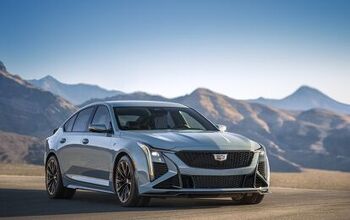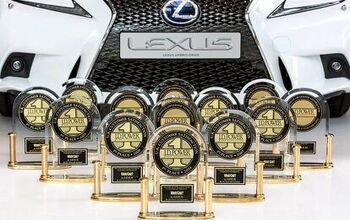QOTD: How Do You Fix Automotive Media?

This may be a bit inside baseball, but two big automotive media sites, CNET and The Drive, apparently let some writers and editors go recently.
The Drive is owned by Recurrent Ventures, a private-equity firm, and CNET is owned by Red Ventures.
Red Ventures, coincidentally or not, also offloaded some of the other brands it owns.
I'm not writing this to pile on to anyone who got let go or to evaluate how good any one of those folks was at their jobs (my personal take, though I am biased as I've met some of these people, is that these are good editors and writers who didn't deserve the ax), but rather to pose a larger question.
We know that the automotive media has shrunk in recent years. Enthusiast titles, mostly print rags, have been shuttered. Popular Web sites seem to die out of nowhere (see: Drive Tribe). The buff books are thinner, in terms of print pages, than they used to be and more ad-heavy.
The thing is, there is a market for automotive content. A market that, in theory, at least based on what I hear and see anecdotally, should be able to support multiple Web sites and outlets, covering various niches. Niche titles aren't dying because of a lack of interest from enthusiasts, but because of broader changes in the economics of media, at least in this author's opinion.
In other words, there's room out there for sites beyond the in-market shopping sites (Cars.com/Auto Trader), the buffs (Car and Driver, Road&Track), and sites like this one.
So I ask you, if you were some guru of media and business, how would you support independent automotive content? Would it be to have less insane expectations for growth compared to private-equity firms (the knock on PE firms is that they tend to make cuts if profit is good but not to the percentage they'd like)? Subscriptions and paywalls? Find a benefactor or benefactors that will spend money but not interfere in editorial independence? Have the OEMs create a fund for journalism, with the agreement that the manufacturers would not be involved at all in content*? Something else?
Yeah, I know, if someone had figured it all out by now, that person would likely be a wealthy media mogul. Still, I am curious.
What say you?
*Not my idea, saw it on the tweet machine.
[Image: Shutterstock.com/Daniel Tadevosyan]
Become a TTAC insider. Get the latest news, features, TTAC takes, and everything else that gets to the truth about cars first by subscribing to our newsletter.

Tim Healey grew up around the auto-parts business and has always had a love for cars — his parents joke his first word was “‘Vette”. Despite this, he wanted to pursue a career in sports writing but he ended up falling semi-accidentally into the automotive-journalism industry, first at Consumer Guide Automotive and later at Web2Carz.com. He also worked as an industry analyst at Mintel Group and freelanced for About.com, CarFax, Vehix.com, High Gear Media, Torque News, FutureCar.com, Cars.com, among others, and of course Vertical Scope sites such as AutoGuide.com, Off-Road.com, and HybridCars.com. He’s an urbanite and as such, doesn’t need a daily driver, but if he had one, it would be compact, sporty, and have a manual transmission.
More by Tim Healey
Latest Car Reviews
Read moreLatest Product Reviews
Read moreRecent Comments
- Pau65792686 I think there is a need for more sedans. Some people would rather drive a car over SUV’s or CUV’s. If Honda and Toyota can do it why not American brands. We need more affordable sedans.
- Tassos Obsolete relic is NOT a used car.It might have attracted some buyers in ITS DAY, 1985, 40 years ago, but NOT today, unless you are a damned fool.
- Stan Reither Jr. Part throttle efficiency was mentioned earlier in a postThis type of reciprocating engine opens the door to achieve(slightly) variable stroke which would provide variable mechanical compression ratio adjustments for high vacuum (light load) or boost(power) conditions IMO
- Joe65688619 Keep in mind some of these suppliers are not just supplying parts, but assembled components (easy example is transmissions). But there are far more, and the more they are electronically connected and integrated with rest of the platform the more complex to design, engineer, and manufacture. Most contract manufacturers don't make a lot of money in the design and engineering space because their customers to that. Commodity components can be sourced anywhere, but there are only a handful of contract manufacturers (usually diversified companies that build all kinds of stuff for other brands) can engineer and build the more complex components, especially with electronics. Every single new car I've purchased in the last few years has had some sort of electronic component issue: Infinti (battery drain caused by software bug and poorly grounded wires), Acura (radio hiss, pops, burps, dash and infotainment screens occasionally throw errors and the ignition must be killed to reboot them, voice nav, whether using the car's system or CarPlay can't seem to make up its mind as to which speakers to use and how loud, even using the same app on the same trip - I almost jumped in my seat once), GMC drivetrain EMF causing a whine in the speakers that even when "off" that phased with engine RPM), Nissan (didn't have issues until 120K miles, but occassionally blew fuses for interior components - likely not a manufacturing defect other than a short developed somewhere, but on a high-mileage car that was mechanically sound was too expensive to fix (a lot of trial and error and tracing connections = labor costs). What I suspect will happen is that only the largest commodity suppliers that can really leverage their supply chain will remain, and for the more complex components (think bumper assemblies or the electronics for them supporting all kinds of sensors) will likley consolidate to a handful of manufacturers who may eventually specialize in what they produce. This is part of the reason why seemingly minor crashes cost so much - an auto brand does nst have the parts on hand to replace an integrated sensor , nor the expertice as they never built them, but bought them). And their suppliers, in attempt to cut costs, build them in way that is cheap to manufacture (not necessarily poorly bulit) but difficult to replace without swapping entire assemblies or units).I've love to see an article on repair costs and how those are impacting insurance rates. You almost need gap insurance now because of how quickly cars depreciate yet remain expensive to fix (orders more to originally build, in some cases). No way I would buy a CyberTruck - don't want one, but if I did, this would stop me. And it's not just EVs.
- Joe65688619 I agree there should be more sedans, but recognize the trend. There's still a market for performance oriented-drivers. IMHO a low budget sedan will always be outsold by a low budget SUV. But a sports sedan, or a well executed mid-level sedan (the Accord and Camry) work. Smaller market for large sedans except I think for an older population. What I'm hoping to see is some consolidation across brands - the TLX for example is not selling well, but if it was offered only in the up-level configurations it would not be competing with it's Honda sibling. I know that makes the market smaller and niche, but that was the original purpose of the "luxury" brands - badge-engineering an existing platform at a relatively lower cost than a different car and sell it with a higher margin for buyers willing and able to pay for them. Also creates some "brand cachet." But smart buyers know that simple badging and slightly better interiors are usually not worth the cost. Put the innovative tech in the higher-end brands first, differentiate they drivetrain so it's "better" (the RDX sells well for Acura, same motor and tranmission, added turbo which makes a notable difference compared to the CRV). The sedan in many Western European countries is the "family car" as opposed to micro and compact crossovers (which still sell big, but can usually seat no more than a compact sedan).


































Comments
Join the conversation
It’s FUBAR. You pick whichever sucks the least, sucks up to automakers the least and reviews of boring cars, let someother outlet do those. Doug D does get ahold of lots of cool cars but he ruins it by talking.
How about correct grammar and spelling?